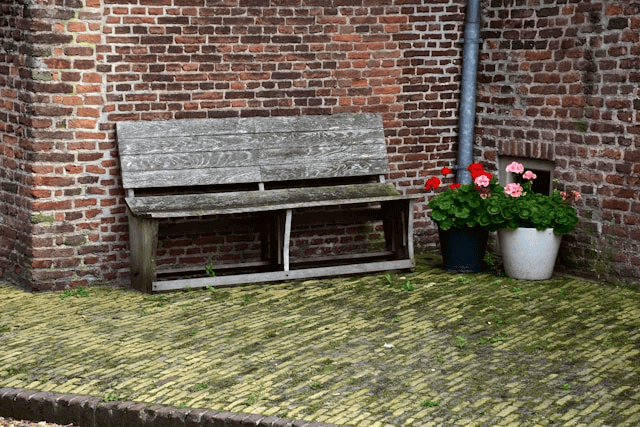An entryway is the first space you and your guests see when entering your home, and it’s often the most cluttered. Shoes, bags, keys, and coats can pile up quickly. That’s why an entryway bench with storage is one of the most functional furniture pieces you can add to your home. Not only does it offer a place to sit while putting on shoes, but it also keeps your space tidy and organized.
In this guide, we’ll walk you through how to build an entryway bench from scratch even if you’re a beginner. With some basic tools, materials, and a bit of time, you can create a stylish and durable DIY entryway storage bench that fits your space and lifestyle perfectly.
Tools and Materials Needed
Before you get started, gather all the tools and materials you’ll need to complete your project.
Tools:
-
Circular saw or miter saw
-
Power drill and drill bits
-
Tape measure
-
Level
-
Sander or sandpaper (120–220 grit)
-
Wood glue
-
Clamps
-
Screwdriver
-
Safety gear (gloves, goggles, ear protection)
Materials:
-
Plywood (¾ inch thick for main structure)
-
2×2 or 1×3 wood boards for supports
-
Wood screws (1¼” or 2″)
-
Wood filler
-
Hinges (if using a lift-top lid)
-
Paint, stain, or wood finish
-
Furniture-grade cushions (optional)
-
Baskets or bins (for cubby storage)
You can customize the design depending on your preferences, but this list covers the essentials for a basic wooden storage bench tutorial.
Planning and Measuring Your Space
Before cutting any wood, take accurate measurements of your entryway. Consider:
-
Available wall space: Will your bench sit against a wall or between other furniture?
-
Traffic flow: Make sure it doesn’t block walkways or door swings.
-
Storage needs: How many people will use it? Do you need space for shoes, backpacks, or seasonal gear?
Standard bench dimensions are around 36–48 inches long, 18 inches high, and 14–18 inches deep. Sketch your design or use free online templates to visualize your final product.
Cutting and Assembling the Frame
Now that you’ve planned your design and measured your space, it’s time to start building the bench frame.
Step 1: Cut Your Wood
Use a circular saw or miter saw to cut your plywood and support pieces to the following dimensions (for a standard 36″ bench):
-
2 side panels: 18″ H x 14″ D
-
1 top panel: 36″ W x 14″ D
-
1 bottom panel: 36″ W x 14″ D
-
1 back panel: 36″ W x 18″ H
-
Optional: divider panels for cubbies or internal compartments
Step 2: Build the Base
-
Assemble the side panels to the bottom panel using wood screws and glue. Clamp the pieces to hold them in place as you drill.
-
Attach the back panel to connect both side panels and reinforce the structure.
-
Install any internal dividers or vertical supports based on your storage layout (cubby-style or open box).
Use a level to ensure the frame is square and even before moving to the next step.
Adding Storage Features
Your entryway bench can serve various purposes shoe storage, coat storage, or a place for baskets and bins. Depending on your needs, choose the best configuration:
Lift-Top Lid (Storage Chest Style)
If you want hidden storage, add a hinged top panel that lifts up:
-
Use 2–3 durable hinges to attach the lid to the back panel.
-
Leave a small gap between the lid and back for smooth movement.
-
Add a soft-close hinge or stay for safety, especially in homes with children.
Open Cubbies
Open cubby holes are perfect for sliding in baskets or bins:
-
Divide the internal space with vertical plywood panels.
-
Space them evenly, allowing about 10–12 inches width per cubby.
-
Make sure the bottom panel can support weight from above.
Drawers (Advanced)
If you’re comfortable with more advanced carpentry, install drawer slides and add pull-out drawers for even more organization.
Finishing Touches
Once your storage bench structure is complete, it’s time to sand and finish.
Sanding:
-
Start with 120 grit and move to 220 grit for a smooth surface.
-
Round out sharp corners, especially if the bench will be used by kids.
Filling & Sealing:
-
Fill holes and seams with wood filler.
-
Sand smooth after drying.
-
Apply paint, wood stain, or sealant. Choose a finish that matches your interior decor white paint for a clean modern look or dark stain for a rustic style.
Optional Upgrades:
-
Add a cushion for a comfortable seating surface. Choose weather-resistant fabric for durability.
-
Install hooks or shelves above the bench for a complete entryway organization system.
Safety Tips and Best Practices
Building your own DIY entryway storage bench can be rewarding, but always follow these safety precautions:
-
Wear protective goggles and gloves when using saws and drills.
-
Always cut on a stable surface.
-
Double-check measurements before drilling or screwing.
-
Use clamps to hold pieces in place while assembling.
If you’re anchoring the bench to a wall, use appropriate wall anchors and screws to secure it safely.
Conclusion
Knowing how to build an entryway bench not only saves money, but also gives you the freedom to create a custom piece that meets your family’s needs. Whether you want a lift-top chest, cubby storage for baskets, or a stylish seating area, a DIY entryway storage bench is a practical project that adds both beauty and function to your home.









